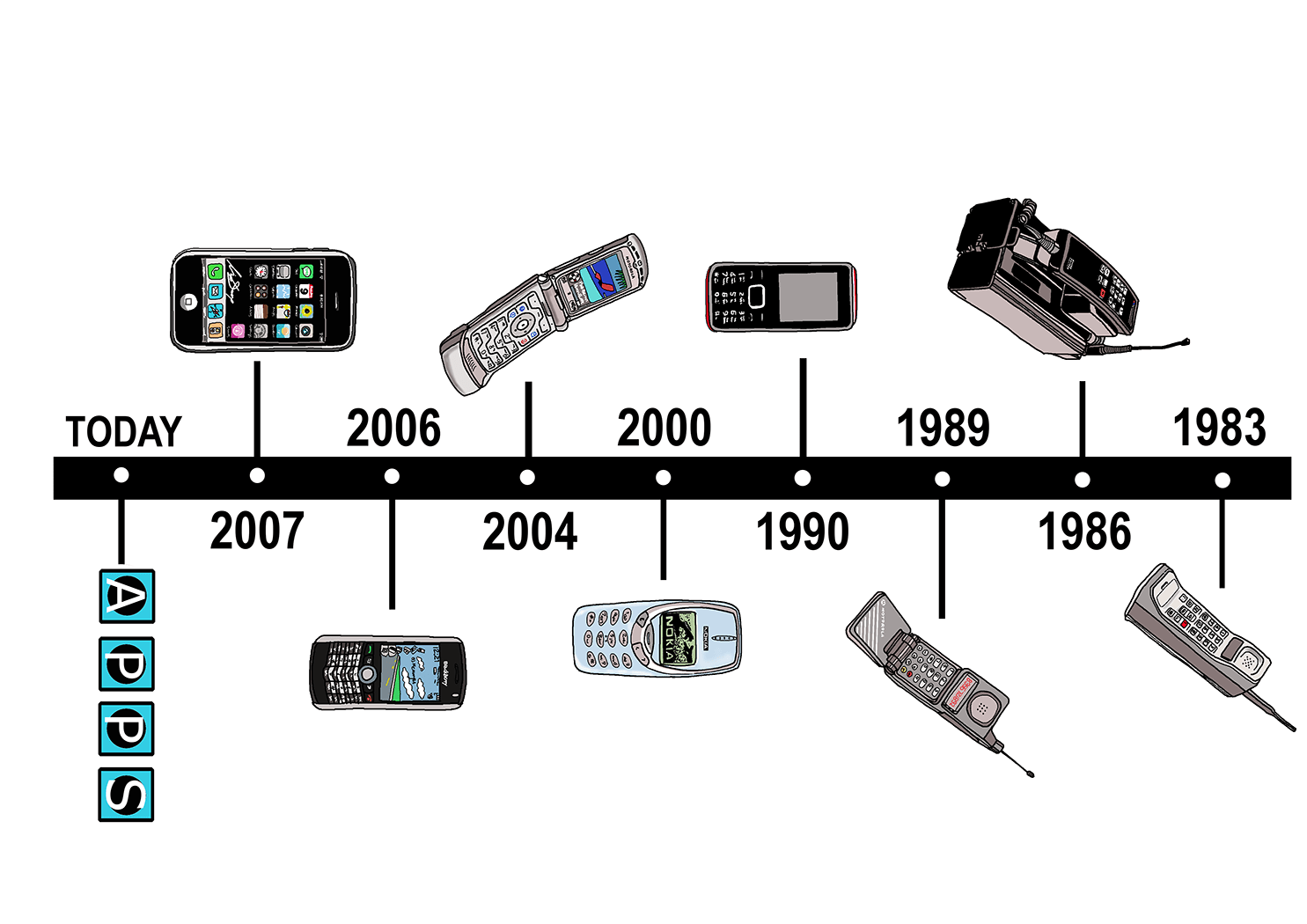Since the advent of the first cell phone four decades ago, the way people communicate has evolved and so have the devices used to communicate. In light of the recent release of Apple’s new iPhone 8, we take a look at how far cell phones have come through these years.
1983: The birth of the handheld portable cell phone
This was the year of David Bowie, Pink Floyd, and Motorola’s release of the handheld portable cell phone, known as the DynaTAC 8000x. The ancient brick phone was the size of a shoe box. It had an LED screen and only 30 minutes of talk time. In the early 1980s, it was priced at a whooping $4,000 USD.
A few years later, Motorola released the 4500x, which was considered a “mobile” device, despite having a battery that weighed about 3.5 kilograms. At this time, it was still considered a luxury and was priced at about $2,000 USD.
1989: Downsized “clamshell” flip phones
When Motorola realized that its previous portable cell phones were inconvenient for consumers, they developed the MicroTAC 9800x. This was one of the first truly portable cell phones, dubbed the “clamshell,” and it was small enough to fit into a shirt pocket. It was one of the earlier versions of the flip phone. The new advancements brought together an LED display, a typical 12-button keyboard, hands-free operations, a calculator, and a market price upward of $2,500 USD.
1990s: The candy bar phones
The public quickly caught on to the importance and utility of the cell phone in the 1990s, and many companies like Nokia, IBM, and Benefon Esc started to develop the candy bar phone. As the name suggests, these new phones were the shape and size of a candy bar, and they came with the basic LED screen.
2000: The origin of the Nokia 3310 — and the memes that ensued
The infamous Nokia 3310 made its entry into the public in the year 2000 and has developed to cult favourite status. It remains at the forefront of cell phone history due to its emergence in popular memes claiming its hypothetical durability to withstand the apocalypse. Due to the popularity of this model, Nokia released a new Nokia 3310 phone in 2017 to return to its roots.
2004: Hip new design
The Motorola Razr’s sleek, slim, and super pocketable design made its way to the fashion-forward crowd of the early 2000s.
2006: The rise of the Blackberry
The classic Blackberry phones were the epitome of the mid-2000s, as the Blackberry-to-Blackberry instant messaging system was made specifically for the tech-savvy business individual. The phone had the standard keyboard, a 240-by-260 pixel LCD screen, and more apps than any average phone of the time.
2007: The fall of the Blackberry
When the legendary iPhone made its debut, the world of telecommunications changed forever. Steve Jobs set the precedent for smartphones today. The iPhone came with features such as the revolutionary multi-touch interface and a laudable 4GB storage space that would later give rise to today’s iPhone.
Today: All about apps and features
In the past, there were only a few competitors in the market for cell phones, but today, the number is countless. The rise of cell phones in recent years has taken the world of technology by storm. Since Apple’s release of the iPhone, smartphones with bigger and better apps and features have been tailgating the market. More and more competitors try to make their mark, introducing everything from waterproof phones to facial recognition security features. Needless to say, we’ve come a long way from 3.5 kilogram battery-packed “portable” cell phones.
What’s next?
There has been a ton of speculation on what the future of cell phones and telecommunications may be. So, what’s next? As of now, we can expect new features ranging from holographic screens to flexible frames. But whatever the future holds, consumers will be patiently waiting by as telecommunications continue to transform the world of technology.


